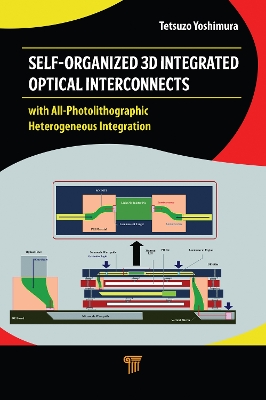Currently, light waves are ready to come into boxes of computers in high-performance computing systems like data centers and super computers to realize intra-box optical interconnects. For inter-box optical interconnects, light waves have successfully been introduced by OE modules, in which discrete bulk-chip OE/electronic devices are assembled using the flip-chip-bonding-based packaging technology. OE modules, however, are not applicable to intra-box optical interconnects, because intra-box interconnects involve "short line distances of the cm-mm order" and "large line counts of hundreds-thousands." This causes optics excess, namely, excess components, materials, spaces, fabrication efforts for packaging, and design efforts. The optics excess raises...
Read more
Currently, light waves are ready to come into boxes of computers in high-performance computing systems like data centers and super computers to realize intra-box optical interconnects. For inter-box optical interconnects, light waves have successfully been introduced by OE modules, in which discrete bulk-chip OE/electronic devices are assembled using the flip-chip-bonding-based packaging technology. OE modules, however, are not applicable to intra-box optical interconnects, because intra-box interconnects involve "short line distances of the cm-mm order" and "large line counts of hundreds-thousands." This causes optics excess, namely, excess components, materials, spaces, fabrication efforts for packaging, and design efforts. The optics excess raises sizes and costs of intra-box optical interconnects enormously when they are built using conventional OE modules.
This book proposes the concept of self-organized 3D integrated optical interconnects and the strategy to reduce optics excess in intra-box optical interconnects.
- ISBN13 9781000064605
- Publish Date 8 March 2021
- Publish Status Active
- Publish Country SG
- Imprint Pan Stanford Publishing Pte Ltd
- Format eBook
- Pages 364
- Language English

